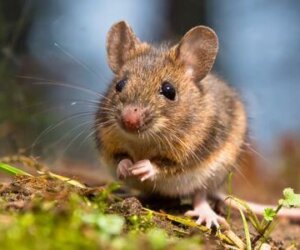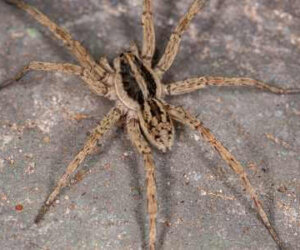Top 10 Most Common Spring Insects and Pests
Springtime means more sunshine, warmer weather, and blooming flowers. Unfortunately, it also comes with the reemergence of insects. As the temperatures begin to rise, pests become more active. Because of this, you may soon find some uninvited guests in your house. While insects and wildlife play vital roles in our ecosystem, some pests are troublesome and can cause headaches for homeowners.
#1) Ants
Some ants may infiltrate your house in the fall or winter to avoid the cold. Most will overwinter in the ground as larvae. As the weather gets warmer, ants become active and seek out shelter, food, and water. These tiny insects can easily get indoors through foundation cracks, vents, pipes, and utility lines. Once inside, ants are often found near a food or water source, particularly kitchens and bathrooms.
The biggest springtime pest is the carpenter ant. Carpenter ants are relatively large ants that form nests inside damp wood, causing extensive damage to walls and wood structures. If your house has a moisture problem, there is a good chance you will attract carpenter ants. A long-term carpenter ant infestation can cause significant property damage that may result in hundreds or even thousands of dollars in repairs.
#2) Spiders
Spiders play an essential role in controlling insect populations. They help control flies, gnats, mosquitoes, and other pests. Most spiders are harmless. The only exceptions are the brown recluse and black widow spiders, which are rarely found in Wisconsin. Nevertheless, spiders make people feel uncomfortable, and their cobwebs are rather annoying. Spiders enter homes through openings around doors and windows. Sometimes they are also brought indoors on furniture and household plants.
#3) Raccoons
Spring brings April showers, May flowers, and raccoon babies! Raccoons mate in late winter with litters usually born in April and May. During this time, mother raccoons seek warm, safe places to have their babies. Attics and chimneys are some of the most common areas female raccoons will have their babies, resulting in unexpected headaches for homeowners. Once inside, raccoons cause all sorts of health hazards and damage to your house.
#4) Brown Marmorated Stink Bugs
Stink bugs have become a growing pest problem in the Midwest. They are well-known for the foul-smelling odor that they emit when threatened. These insects enter your home during the fall and winter to escape the cold. Stink bugs will become more active as temperatures warm. They are relatively harmless to humans and are primarily a nuisance. The only significant threat they pose is to farmers and gardeners since they eat plants and crops.
#5) Boxelder Bugs
As their name suggests, boxelder bugs feed on boxelder trees. These insects often move indoors during the fall and winter, seeking shelter from the cold. As temperatures rise in the spring, boxelder bugs emerge and become an annoyance for homeowners. They do not really pose a threat to you or your home. Boxelder bugs are primarily nuisance pests because they typically congregate on windows and siding in large masses. However, do not squish them. They will leave stains on curtains and fabrics.
#6) Asian Lady Beetles
Like boxelder bugs, Asian lady beetles seek shelter indoors to hibernate over the winter. Often confused for ladybugs, these beetles secrete foul-smelling fluids, bite, and congregate around windows in large groups. As the weather warms up, they become more active. They will climb around your windows and furniture. However, do not squish them. They will leave stains on your furnishings and curtains.
#7) Squirrels
Spring has arrived! That means it is officially squirrel baby season. Squirrels mate in late winter and again in mid-summer, with litters usually born a month and a half after the mating season. Female squirrels often search for a safe place to nest. Attics, chimneys, and sheds are some of the most common areas squirrels build nests to have their young. While baby squirrels are cute, they are nosy and can cause serious damage to your insulation and electrical wires.
#8) Wasps
Wisconsin is home to several stinging insect species, including paper wasps, honey bees, and bald-faced hornets. Bees play an essential role in our environment because they help pollinate our crops. Mated queens overwinter in underground nests or artificial structures. As the weather gets warmer in the spring, the queen will lay eggs and start a new colony from scratch.
#9) Termites
Spring is the swarming season for most subterranean termites, especially after rain showers. These silent destroyers constantly feed on wood. Termite activity is often overlooked until it is too late. A long-term termite infestation can cause extensive, expensive damage to your house. If your home has a moisture problem, there is a good chance you will also attract termites. Luckily, termites are relatively uncommon in Milwaukee and southeastern Wisconsin. The carpenter ant is the main wood-destroying culprit in our region.
#10) Japanese Beetles
Japanese beetle grubs spend the winter underground in the soil. As the ground begins to thaw, adult beetles emerge from the ground in June and July. Japanese beetles are an invasive species that wreaks havoc with their feeding habits. Grubs feed on grass roots causing large patches of dead grass in your lawn. Adult beetles skeletonize leaves by feeding on all of the plant matter, except the veins. Japanese beetles feed on 300 different types of plants.
Keep Pests Out of Your Firewood and Home
January 15, 2025 | Winter Pest Control
There’s nothing better than curling up in a warm blanket on a snowy winter day. The sound of crackling fire as you enjoy a good book and hot cocoa in front of the fireplace. But in an instant, the cozy vibe fades as you grab a log to throw on the fire and discover that it’s full of bugs!
You weren’t the only one enjoying the warmth. During the winter, bugs and rodents often seek shelter in woodpiles, and we may unknowingly invite these unwanted guests into our homes by bringing in infested firewood. Follow our tips to protect your firewood and keep your home pest-free this winter.
--
What Pests Are Attracted to Firewood?
Firewood may keep you warm in the winter but can also invite unwanted guests into your home! This is particularly true during colder weather when insects search for sources of shelter and warmth. Below are some of the most common pests that are attracted to firewood:

Termites
Termites are well known for feeding on wood and destroying wooden structures. These insects are attracted to firewood because it can provide a moist shelter with plenty of cellulose to eat. Termites are more likely to infest wood on the ground. You can tell if the wood is infested with termites by the presence of small holes or rough tunnels in the wood, mud tubes, small piles of sawdust-like droppings (frass), and a hollow sound when tapping on the wood.
Carpenter Ants
Carpenter ants don’t eat wood like termites but will chew through wood and create nests in firewood piles. They are more likely to infest moist firewood that is touching the ground. Carpenter ants create smooth, clean tunnels in wood to make nests. Small piles of sawdust-like material near the entrances of holes in wood are a clear sign of carpenter ants. Like termites, ants can quickly infest walls, floors, and other wood structures.

Wood-Boring Beetles
Powderpost beetles and bark beetles typically infest dead trees or other sources of decaying, untreated wood like firewood. Wood-boring beetles rely on old wood for food and shelter, especially in the winter. Although these pests are not as destructive as termites, they can still cause issues. These beetles lay their eggs in the wood, and the larvae burrow through it as they grow.

Rodents
Rodents like house mice and pack rats often seek shelter in firewood piles. They are attracted to the gaps between stacked wood, which provide cozy nesting spots. Wood piles stacked against your home give rodents easy access to find and squeeze through gaps in your foundation or siding, allowing them to invade basements and crawlspaces. The last thing you want is a rat or mouse in your home.

Other Occasional Invaders
Other insects, like spiders and cockroaches, will inhabit firewood piles for shelter. Earwigs, pillbugs, centipedes, crickets, and springtails are attracted to most environments under and around firewood piles. Like termites and ants, these pests can use your wood pile as a starting point to invade your home.
--
7 Ways to Keep Your Firewood Pest-Free
Pests are drawn to stacked wood because it provides shelter, moisture, and a food source during the winter. So, how do I keep these pests out of my firewood? Here are some things you can do to keep bugs and other pests away from your firewood:
1.) Place Firewood Away from Home
While it may seem convenient to keep your firewood close to your house, we strongly advise against this practice. Keeping your firewood at least 20 to 30 feet away from your home’s foundation greatly reduces the likelihood of pest infestations. If your property doesn’t allow that distance, place the firewood at the farthest point possible from your house, ensuring it is away from other structures like fences or sheds.
2.) Keep Firewood Off the Ground
Place firewood off the ground on a storage rack or brick or cinder block platform. You can find reasonably low-cost firewood storage racks online or at your local hardware store. Raising your firewood helps keep it dry.
3.) Keep the Woodpile Dry
Insects are drawn to moisture, and a damp woodpile on the ground can easily attract them to the firewood. To protect your woodpile from rain, use a tarp. Ensure that you cover the top of the woodpile and a few inches down the sides. Elevating the firewood makes it easier to cover with a tarp and provides better air circulation, helping to keep the wood dry and preventing mold or fungal growth.
4.) Rotate the Woodpile
It is important to use the oldest wood first to prevent pest infestations and rot. The longer old wood is left in the pile, the more susceptible it becomes to infestations. Rotate the firewood pile so the older firewood logs are on top and the newer restocked logs are at the bottom. Furthermore, a neatly stacked pile makes it much easier to grab logs compared to pulling them out of a disorganized heap.
5.) Avoid Pesticides
Do not spray your firewood with pesticides. Spraying pesticides causes the insects to burrow deeper into the wood. If you burn the wood later, the pesticides will release harmful chemicals, posing a health risk.
6.) Make Two Trips
It may be convenient to bring in extra firewood for the fires you plan to light today and later in the week. However, leaving wood lying around your home for too long can lead to pest infestations. To avoid this problem, only bring in what you need and take another trip later in the week when you need more firewood.
7.) Purchase Firewood Locally
If you purchase firewood, make sure you purchase firewood locally. Non-local wood can contain invasive insects that could be introduced to your property and create problems over time.
--
Professional Pest Control in Milwaukee, WI
If your firewood has brought unwanted guests into your home, call Advanced Wildlife and Pest Control for professional pest control in Milwaukee, Wisconsin. Our team is dedicated to protecting your home and family from unwanted pests and critters. Contact us today at (262) 242-4390 to schedule service!
Enjoy a Pest-FREE Home Today!
Get rid of nuisance pests and critters with our professional pest control in Milwaukee, Wisconsin.
Schedule Now!
